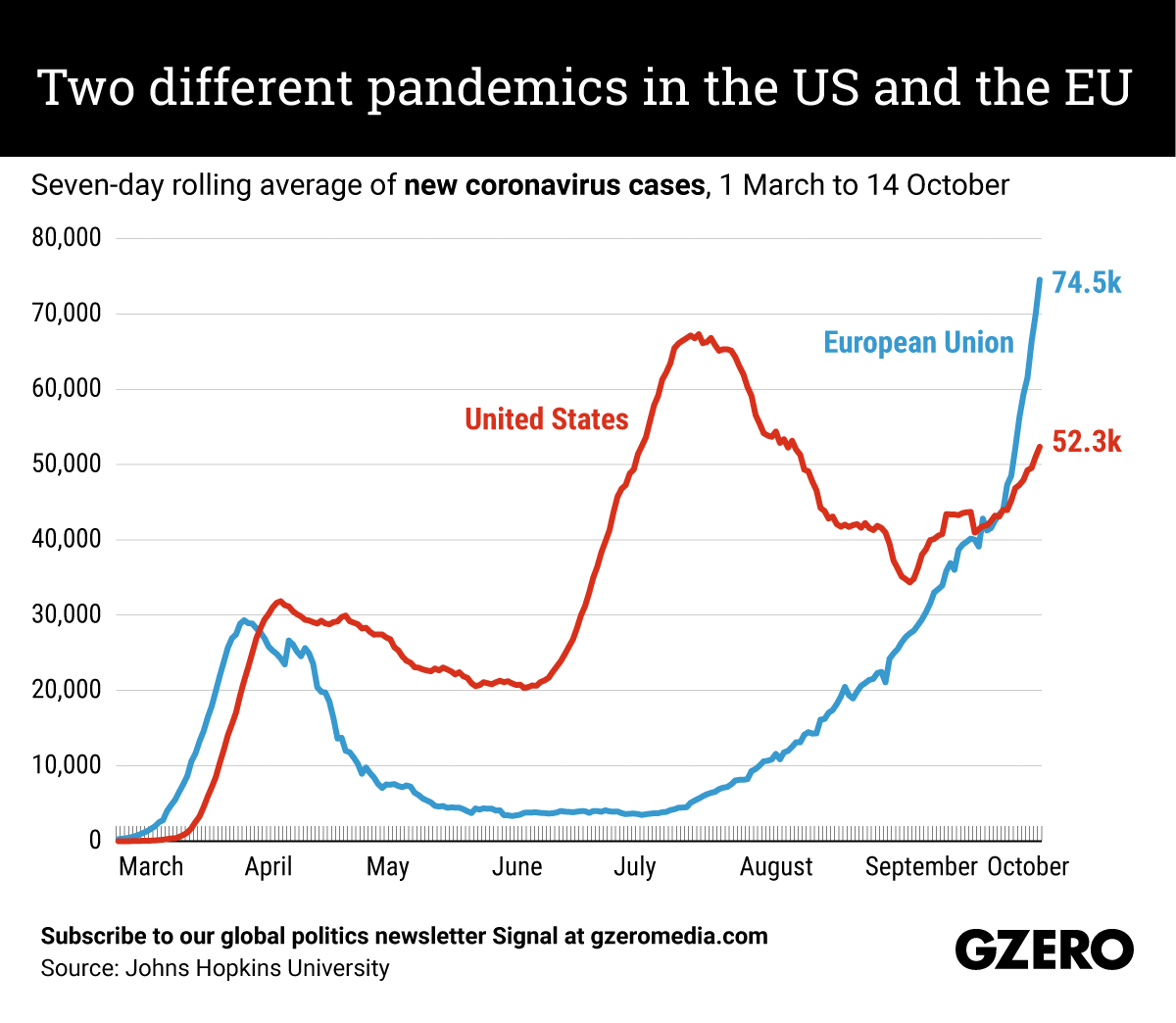October 15, 2020
The United States and the European Union have comparable population sizes, but until recently the trajectories of their COVID-19 outbreaks in recent months have been vastly different. As new daily coronavirus cases continue to rise across most US states — prompting worries of a "third wave" in hospitalization rates — many European countries are fighting a full-blown "second wave" of the pandemic that has brought Europe's mortality closer to that of the US, and led more European governments to reinforce strict measures to contain COVID-19. The current situation is a sharp contrast to the disparity seen over the summer, when US cases were spiking across much of the Midwest and South while European countries seemed to have kept the coronavirus (mostly) in check due to stricter adherence to social distancing and mask-wearing. Here's a look at the seven-day rolling average of new COVID-19 cases, and three-day rolling averages of new deaths and new deaths per capita in the EU vs the US since March.
More For You
Mastercard Economic Institute's Outlook 2026 explores the forces redefining global business. Tariffs, technology, and transformation define an adaptive economy for the year ahead. Expect moderate growth amid easing inflation, evolving fiscal policies, and rapid AI adoption, driving productivity. Digital transformation for SMEs and shifts in trade and consumer behavior will shape strategies worldwide. Stay ahead with insights to help navigate complexity and seize emerging opportunities. Learn more here.
Most Popular
Think you know what's going on around the world? Here's your chance to prove it.
Miami Mayor-elect Eileen Higgins points as she thanks her staff and supporters on the night of the general election, on Tuesday, Nov. 4, 2025.
Carl Juste/Miami Herald/TNS/ABACAPRESS.COM
A Democrat won Miami’s mayoral race for the first time in nearly 30 years. The Republican defeat will ring some alarms for the party – and their support among Latino voters.
Women work in the plastic container assembly area inside the El Oso shoe polish factory, located in Mexico City, Mexico, in its new facilities, after officers from the Secretariat of Citizen Security and staff from the Benito Juarez mayor's office arbitrarily and violently remove their supplies, raw materials, machinery, and work tools on January 17 of this year following a coordinated operation stemming from a private dispute. On August 27, 2025.
Photo by Gerardo Vieyra/NurPhoto
50: Mexico’s President Claudia Sheinbaum is taking a page out of US President Donald Trump’s book, implementing up to a 50% tariff on more than 1,400 products in a bid to boost domestic production.
© 2025 GZERO Media. All Rights Reserved | A Eurasia Group media company.
